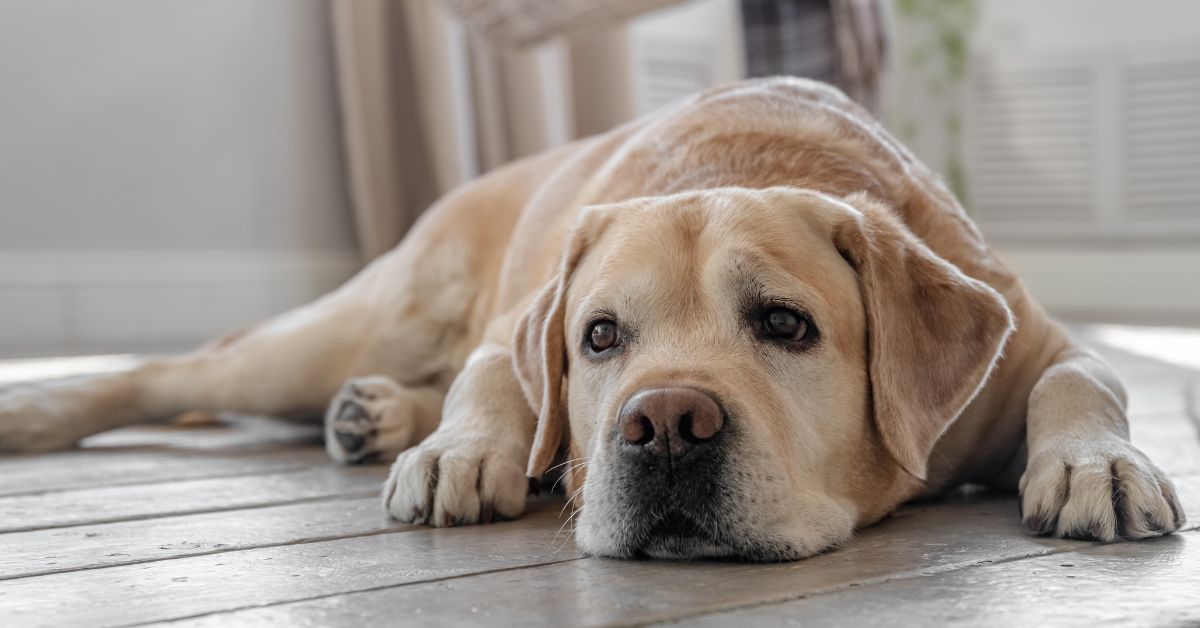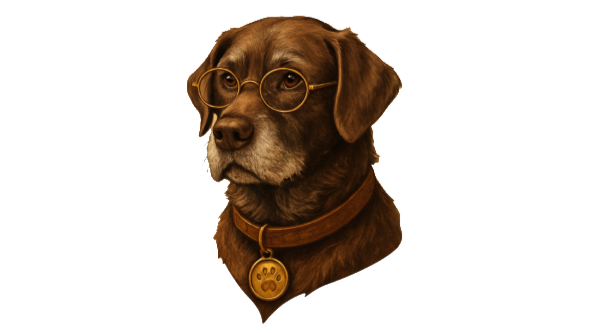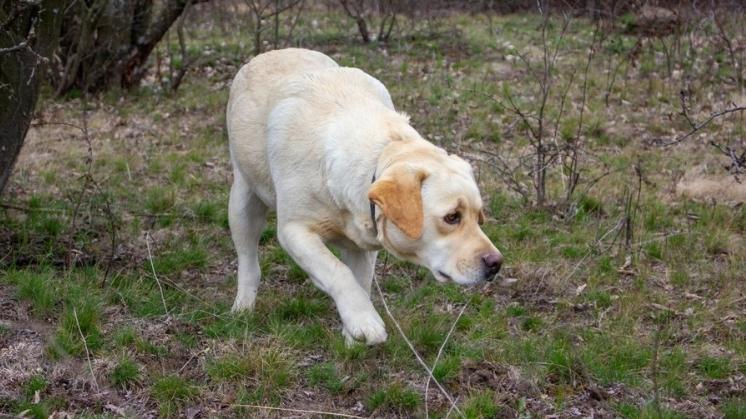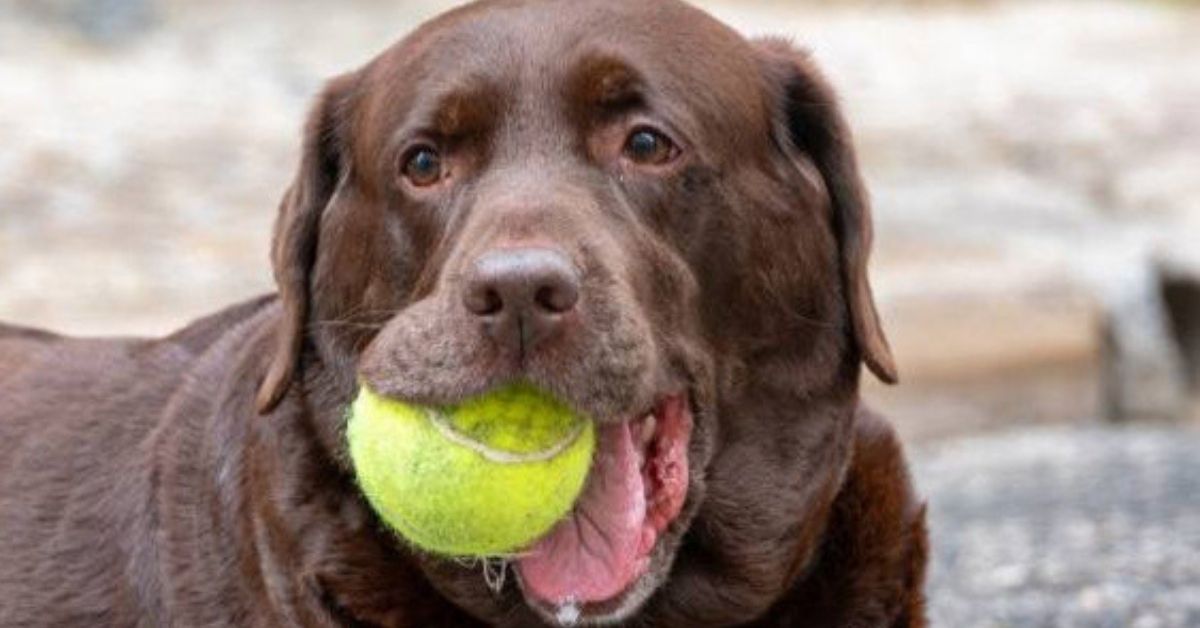
Subtle Signs of Joint Pain in Senior Labradors
Labrador Retrievers are renowned for their boundless energy, infectious enthusiasm, and playful spirit that seems to last forever. These remarkable dogs have been bred for generations to work tirelessly alongside humans, whether retrieving waterfowl in icy waters, assisting fishermen with their nets, or simply being the perfect family companion who's always ready for the next adventure. But as they enter their senior years—typically around age 7 or 8—you may start to notice subtle changes in behavior and movement that are easy to dismiss as simply "getting older" or "slowing down naturally."
However, these seemingly minor shifts in your Lab's daily routine, energy levels, and physical capabilities often signal something much more significant and treatable: joint pain. This discomfort can range from mild stiffness after rest to severe arthritis that significantly impacts quality of life, but the good news is that early recognition and intervention can make a dramatic difference in your senior Lab's comfort and mobility.
Recognizing early signs of joint issues like arthritis, hip dysplasia, or elbow dysplasia is absolutely essential to improving your Lab's quality of life—and potentially extending their mobility, comfort, and overall happiness well into their golden years. The key lies in understanding that joint pain in dogs is often a progressive condition that, when caught early, can be managed effectively to maintain an excellent quality of life for years to come.
Understanding Joint Health in Aging Labrador Retrievers
The Anatomy of Canine Joint Problems
To understand why joint problems are so common in senior Labradors, it's helpful to understand basic joint anatomy and how aging affects these critical structures. Joints are complex systems where bones meet, cushioned by cartilage and lubricated by synovial fluid. Over time, this cartilage can wear down due to normal use, genetic predisposition, previous injuries, or developmental abnormalities present from birth.
In healthy joints, cartilage provides a smooth, slippery surface that allows bones to glide effortlessly against each other. As this cartilage deteriorates—a process that can begin surprisingly early in a dog's life—the underlying bone becomes exposed, leading to inflammation, pain, and the characteristic stiffness associated with arthritis.
The Labrador-Specific Risk Factors
Labradors face several unique challenges when it comes to joint health that make them particularly susceptible to developing problems as they age. Their genetics play a significant role, with certain bloodlines carrying higher risks for hip and elbow dysplasia—developmental conditions where the joint doesn't form properly, leading to abnormal wear patterns and early arthritis onset.
Additionally, the Labrador's natural enthusiasm and high energy levels during their younger years, while wonderful for their mental and physical health, can sometimes contribute to joint wear over time, especially if they engage in high-impact activities like jumping, intense fetch sessions on hard surfaces, or repetitive motions that stress particular joints.
🐾 Why Joint Pain Is So Common in Senior Labs
Labradors are particularly prone to developing hip and elbow dysplasia, as well as osteoarthritis, due to a combination of factors including their size, genetic predisposition, and the high activity levels that characterize their youth and young adult years. As cartilage gradually wears down with age and use, movement becomes increasingly uncomfortable and potentially painful.
Genetic Predisposition and Breed-Specific Issues
Hip dysplasia, a condition where the hip joint doesn't develop properly, affects approximately 12-15% of Labradors according to the Orthopedic Foundation for Animals. This condition creates abnormal pressure distribution across the joint, leading to accelerated cartilage wear and early onset arthritis. Similarly, elbow dysplasia affects the complex elbow joint and can cause significant discomfort and mobility issues if left unmanaged.
The Hidden Nature of Canine Pain
Perhaps most challenging for pet parents is the fact that Labs, with their inherently loyal and stoic personalities, often hide their discomfort remarkably well. This evolutionary trait, which once helped wild canines avoid appearing vulnerable to predators or pack members, means that by the time obvious signs of pain appear, the underlying joint damage may already be quite advanced.
Dogs are masters at adapting their movement patterns to compensate for discomfort, often developing subtle changes in gait or behavior that can be easily overlooked by even the most attentive pet parents. This makes early detection both crucial and challenging, requiring pet owners to become keen observers of their dog's normal patterns so they can recognize when changes occur.
Environmental and Lifestyle Factors
Modern lifestyle factors can also contribute to joint problems in senior Labs. Obesity, which affects a significant percentage of pet dogs, puts additional stress on already-compromised joints. Each extra pound of body weight translates to several pounds of additional force on weight-bearing joints during movement, accelerating cartilage wear and increasing pain levels.
Similarly, previous injuries that may have seemed minor at the time—such as a twisted ankle during an enthusiastic play session or a hard landing after jumping—can create lasting changes in joint structure that become apparent only as the dog ages and the body's natural healing abilities decline.
🔍 Comprehensive Guide to Recognizing Joint Pain in Senior Labs
Understanding the subtle signs of joint pain requires careful observation and knowledge of what to look for. These early warning signs often develop gradually, making them easy to miss or attribute to normal aging rather than treatable discomfort.
1. Slowing Down on Walks and Exercise Reluctance
Your once-eager walker who used to pull you toward the door at the first mention of "walk" now lags behind, takes noticeably shorter steps, or shows hesitation when approaching hills, stairs, or uneven terrain. This change often happens so gradually that it's easy to dismiss as age-related tiredness rather than discomfort-driven avoidance.
Watch for subtle signs like choosing to walk on grass rather than pavement, taking longer rest breaks during walks, or showing less enthusiasm for routes that include challenging terrain. Some dogs may also begin to favor certain directions on walks, preferring routes with fewer inclines or obstacles.
2. Difficulty Rising and Movement Transitions
Perhaps one of the most common early signs of joint pain in senior Labs is the struggle or hesitation when getting up from a resting position. You might notice a few seconds of stiffness before your dog fully rises, or see them needing multiple attempts to stand from a lying position.
This stiffness is often most pronounced after periods of rest, particularly first thing in the morning or after long naps. The phenomenon, similar to what humans with arthritis experience, occurs because joints stiffen when not moving and require time to "warm up" and become comfortable again.
Pay attention to how your Lab transitions between positions—lying down, sitting, and standing. Healthy dogs move fluidly between these positions, while dogs experiencing joint discomfort may show hesitation, careful positioning, or visible effort during these transitions.
3. Reluctance to Jump or Climb
If your Lab previously enjoyed jumping onto the couch for evening cuddles, hopping into the car for rides, or bounding up stairs with enthusiasm but now avoids these activities or approaches them with obvious caution, joint discomfort is likely the culprit.
This avoidance behavior often develops gradually. Initially, you might notice your dog taking a moment to "consider" the jump before attempting it, or requiring encouragement to do something they previously did without thought. Eventually, they may avoid these activities entirely, choosing to remain on the ground rather than risk the discomfort associated with jumping or climbing.
4. Changes in Gait and Movement Patterns
Observing your Lab's movement patterns can provide valuable insights into their joint health. Watch for stiffness, particularly after rest periods, subtle limping that may come and go, or the distinctive "bunny hop" running pattern where both hind legs move together rather than in the normal alternating pattern.
Morning stiffness is particularly common in dogs with arthritis, similar to humans with the condition. You might notice that your Lab appears stiff or careful in their movements when first getting up but seems to "warm up" and move more normally after a few minutes of gentle activity.
Changes in how your dog navigates stairs can also be telling—they might begin taking stairs one at a time rather than their usual confident stride, or show reluctance to use stairs altogether.
5. Behavioral and Emotional Changes
Pain can significantly impact a dog's emotional state and social behavior. If your typically friendly and social senior Lab becomes less interactive, shows grumpiness when approached or touched, or withdraws from family activities they previously enjoyed, underlying pain may be the cause.
Some dogs become more clingy when in pain, seeking extra comfort and reassurance from their human family. Others may become irritable or snappy, particularly when touched in areas that are painful or when asked to move in ways that cause discomfort.
Changes in sleep patterns are also common. Dogs with joint pain may have difficulty finding comfortable sleeping positions, leading to restless nights or preference for different sleeping locations—perhaps moving from their usual bed to the cool kitchen floor or seeking out softer surfaces.
6. Self-Soothing Behaviors
Excessive licking, chewing, or attention to specific joints—particularly knees, hips, elbows, or shoulders—often indicates that your dog is trying to soothe inflammation or discomfort in those areas. This behavior may be subtle at first but can become more pronounced as discomfort increases.
Some dogs develop repetitive behaviors like excessive grooming of certain areas, which can lead to hair loss or skin irritation. Others may constantly shift positions while resting, unable to find a comfortable spot due to joint discomfort.
7. Muscle Loss and Physical Changes
Reduced activity levels due to joint pain can lead to muscle atrophy, particularly noticeable in the hind legs and shoulders. This muscle loss creates a cycle where weakened muscles provide less support for compromised joints, potentially worsening pain and mobility issues.
You might notice that your Lab's legs appear thinner than they used to, or that they seem less stable when standing or walking. This muscle loss often happens gradually but can become quite pronounced if joint pain significantly reduces activity levels over time.
✅ Comprehensive Management Strategies for Joint Pain
Professional Veterinary Assessment
Always make veterinary consultation your first step when you suspect joint pain in your senior Lab. A thorough examination can rule out other potential causes of the symptoms you're observing and help determine the extent of any joint damage. Your veterinarian may recommend diagnostic imaging like X-rays to assess joint structure and identify specific problems.
During the veterinary visit, be prepared to discuss your observations in detail, including when you first noticed changes, which activities seem most affected, and whether symptoms are worse at particular times of day. This information helps your vet develop the most appropriate treatment plan for your dog's specific situation.
Nutritional Interventions and Supplements
Joint supplements containing glucosamine, chondroitin, MSM, and turmeric may help reduce inflammation and support cartilage health. However, it's important to understand that supplements work best as part of a comprehensive management plan rather than standalone treatments.
Glucosamine and chondroitin are building blocks of healthy cartilage and may help slow cartilage breakdown while supporting the body's natural repair processes. MSM (methylsulfonylmethane) provides sulfur compounds that support connective tissue health. Turmeric contains curcumin, a natural anti-inflammatory compound that may help reduce joint inflammation.
Omega-3 fatty acids, typically found in fish oil supplements, provide additional anti-inflammatory benefits and may help reduce joint pain and stiffness. These supplements are generally well-tolerated and can be safely used long-term under veterinary guidance.
Weight Management as Foundation Therapy
Maintaining a healthy weight is perhaps the single most important factor in managing joint pain in senior Labs. Every extra pound of body weight translates to approximately four pounds of additional force on weight-bearing joints during movement, significantly increasing pain and accelerating cartilage damage.
Work with your veterinarian to determine your Lab's ideal weight and develop a realistic plan to achieve and maintain it. This may involve adjusting food portions, changing to a weight management formula food, and modifying exercise routines to maximize calorie burn while minimizing joint stress.
Environmental Modifications for Comfort
Creating a joint-friendly environment can significantly improve your senior Lab's daily comfort. Orthopedic beds provide crucial support for aging joints during rest periods, helping reduce pressure points and improving sleep quality. Memory foam or other supportive materials can make a dramatic difference in how your dog feels after resting.
Area rugs on smooth floors provide better traction and confidence for dogs with joint issues, reducing the risk of slips that could cause injury or increase anxiety about movement. Non-slip mats around food and water bowls, near favorite resting spots, and in high-traffic areas help create a safer environment for less stable senior dogs.
Ramps for stairs, cars, and furniture eliminate the need for jumping and climbing that can be painful for dogs with joint issues. While some dogs may need time to adjust to using ramps, most adapt quickly when they realize these tools make movement more comfortable.
Appropriate Exercise and Physical Therapy
Gentle, consistent exercise remains important for dogs with joint pain, as movement helps maintain muscle strength, joint flexibility, and overall health. However, the type and intensity of exercise may need significant modification from your Lab's younger years.
Low-impact activities like walking on soft surfaces, swimming (if available), and controlled play sessions help maintain fitness without excessive joint stress. Swimming is particularly beneficial as the water's buoyancy supports the dog's weight while providing excellent muscle conditioning.
Physical therapy exercises, which your veterinarian or a certified canine rehabilitation therapist can teach you, may include range-of-motion movements, balance exercises, and gentle strengthening activities that can be performed at home.
Pain Management and Medical Interventions
Depending on the severity of your Lab's joint pain, your veterinarian may recommend medications to help manage discomfort and inflammation. Non-steroidal anti-inflammatory drugs (NSAIDs) designed specifically for dogs can provide significant pain relief and improve quality of life when used appropriately under veterinary supervision.
Other medical interventions might include joint injections, prescription diets formulated for joint health, or newer therapies like laser treatment or acupuncture, which some dogs find helpful for pain management.
Advanced Care Considerations for Senior Labs with Joint Pain
Monitoring and Adjusting Treatment Plans
Joint pain management in senior dogs is rarely a "set it and forget it" proposition. Regular monitoring and adjustment of treatment plans ensures that your Lab continues to receive optimal care as their condition changes over time.
Keep a simple journal tracking your dog's good days and challenging days, noting weather patterns, activity levels, and any changes in mobility or comfort. This information helps your veterinary team make informed decisions about treatment adjustments.
Alternative and Complementary Therapies
Many pet parents find success incorporating alternative therapies alongside conventional treatment. Massage therapy, when performed correctly, can help improve circulation and provide comfort to sore muscles and joints. Gentle stretching exercises may help maintain flexibility and range of motion.
Some dogs benefit from heat therapy during cold weather, when joint stiffness tends to worsen. Warm (not hot) compresses applied to affected joints for short periods may provide temporary relief, though this should always be done under veterinary guidance to avoid burns.
Quality of Life Assessment
Regular assessment of your senior Lab's quality of life helps ensure that management strategies are truly effective. Consider factors like appetite, interest in activities, social interaction, sleep quality, and overall demeanor when evaluating how well current treatments are working.
Quality of life scales designed specifically for dogs with mobility issues can provide objective measures to discuss with your veterinary team, helping guide decisions about treatment modifications or additional interventions.
💬 Final Thoughts: Advocating for Your Senior Lab's Comfort
Your senior Labrador may not be able to tell you directly that they're experiencing joint pain—but their body language, movement patterns, and behavioral changes will provide clear signals if you know what to look for. By becoming an observant advocate for your dog's comfort and taking early action when signs of joint discomfort appear, you're giving them the best possible chance to stay mobile, happy, and pain-free during their golden years.
The journey of managing joint pain in senior dogs requires patience, observation, and often some trial and error to find the combination of treatments that works best for your individual Lab. However, the investment in time and attention pays tremendous dividends in the form of more comfortable days, maintained mobility, and the continued joy of an active, engaged senior companion.
Remember that joint pain management is not about returning your senior Lab to their youthful levels of activity, but rather about ensuring they can enjoy their golden years with dignity, comfort, and the ability to participate in the activities that bring them joy. With proper management, many dogs with joint issues continue to enjoy excellent quality of life for years after their initial diagnosis.
The key is starting early, staying observant, and working closely with your veterinary team to develop and refine a management plan that evolves with your dog's changing needs. Because every step your Lab takes should feel as good as the unconditional love they give you every single day—and with proper care and attention, this goal is absolutely achievable.
📸 Photo Credits: Featured images in this article are licensed from Shutterstock



